The Sydney Red Gum, Angophora costata, has just been named 2023 Eucalypt of the Year!
It’s no wonder the tree is so well-loved, with those fantastically wiggly limbs that capture the imagination, and that smooth red bark that calls out to be touched!
Known as kajimbourra by the Dharawal people, the Sydney Red Gum is synonymous with the sandstone escarpments of the Greater Sydney region, where it grows in woodlands on shallow, sandy soils. Also known as the Smooth-barked Apple, the species is distributed from Bodalla on the NSW South Coast to Coffs Harbour (NSW North Coast), from the coast to adjacent inland ranges. Interestingly, there are disjunct populations on sandstone escarpments west of Townsville, suggesting a wider historic distribution.
Many Australians will be most familiar with the Sydney Red Gum as an important part of the urban forest in our cities and towns. With its broad trunk, attractive bark and spreading form, the species has been planted widely across suburban parklands and streetscapes and is beloved well beyond its natural range.
The Sydney Red Gum has this in common with this year’s runners-up, the Lemon-scented Gum (Corymbia citriodora) and Red Flowering Gum (Corymbia ficifolia). Each are so widely and commonly planted they have become part of the Australian psyche, at least in the south, where they evoke strong memories of childhood summers and days past.
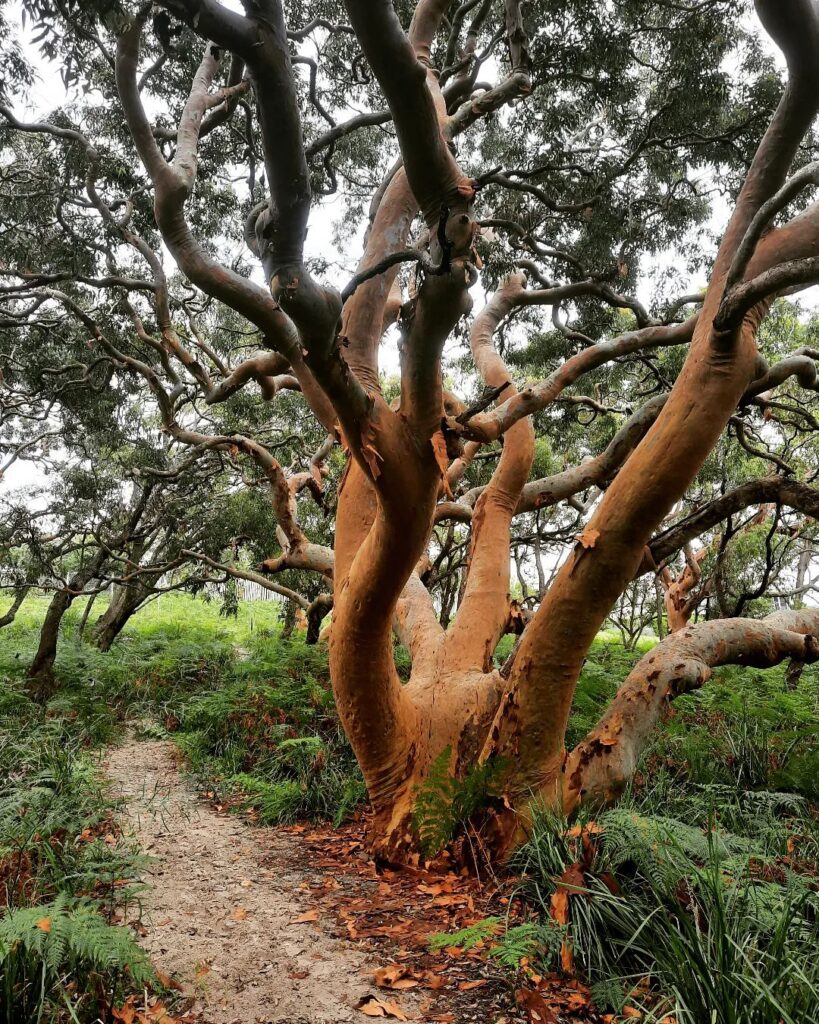
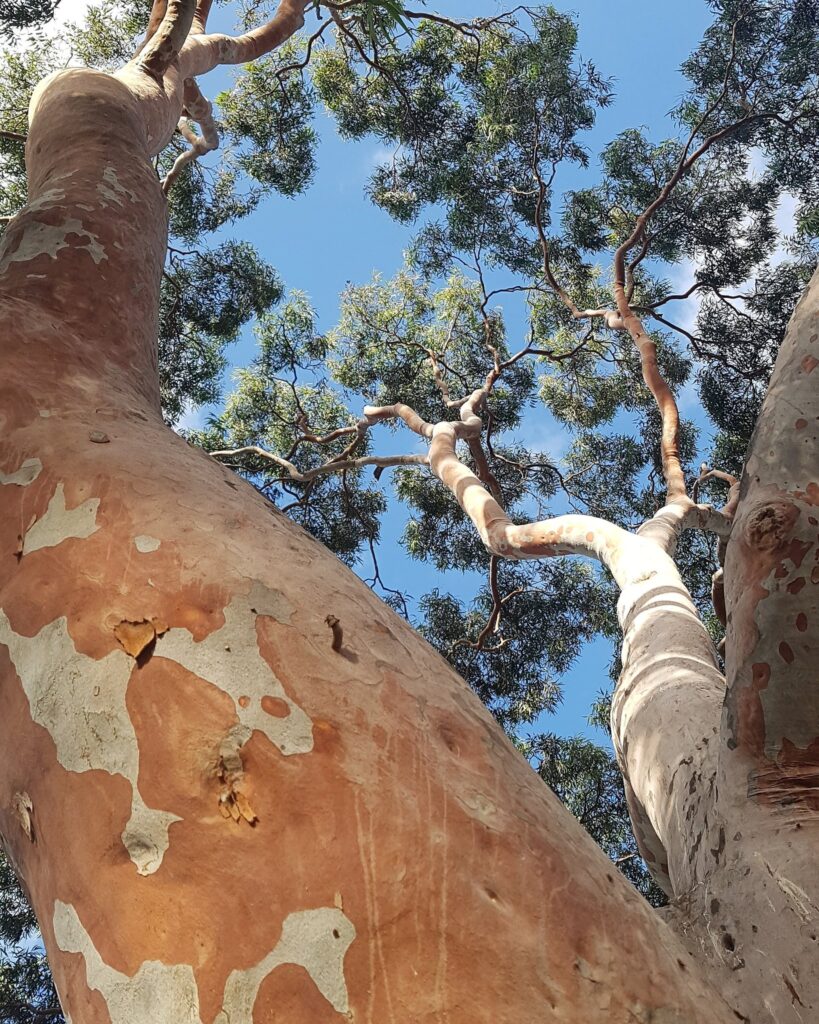
Wait, how did an Angophora win Eucalypt of the Year?
The term “eucalypt” is used to group three closely-related genera of plants: Angophora, Corymbia and Eucalyptus.
The genus Eucalyptus holds around 750 species, including the well-known River Red Gum (Eucalyptus camaldulensis), Tasmanian Blue Gum (Eucalyptus globulus) and Silver Princess (Eucalyptus caesia). The Corymbia genus contains about 100 species, including the much-loved Lemon-scented Gum (Corymbia citriodora) and Red-flowering Gum (Corymbia ficifolia). Angophora has just 10 or so species and all restricted to the east coast. As well as the Sydney Red Gum (Angophora costata), other examples include the Rough-barked Apple (Angophora floribunda) and Dwarf Apple (Angophora hispida).
The species in Corymbia were split from Eucalyptus in 1995, which is why many horticulturalists still refer to the Lemon-scented Gum as ‘Eucalyptus citriodora‘. Angophora has existed as a genus since 1797, and has only been recognised as a eucalypt more recently.
So, every Eucalyptus is a eucalypt, but not all eucalypts are Eucalyptuses!
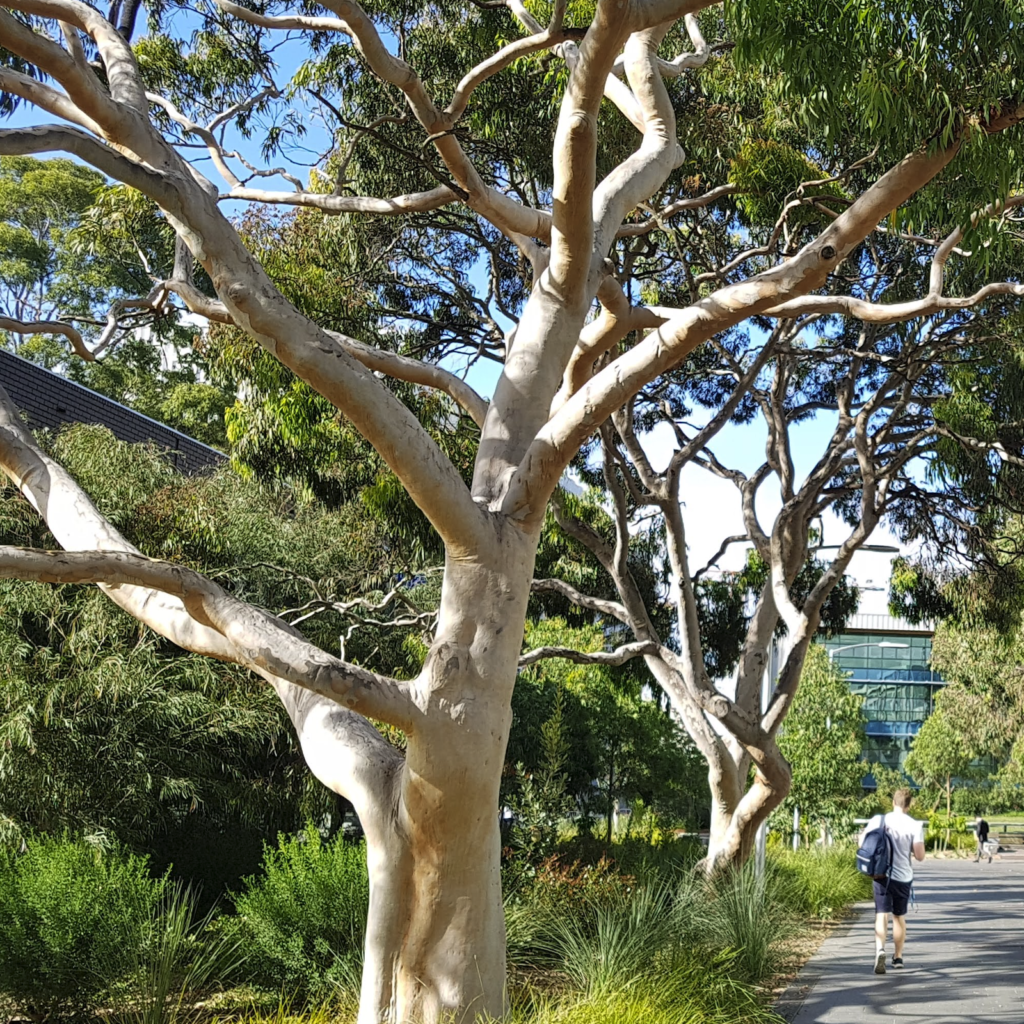
Angophora costata – Sydney Red Gum
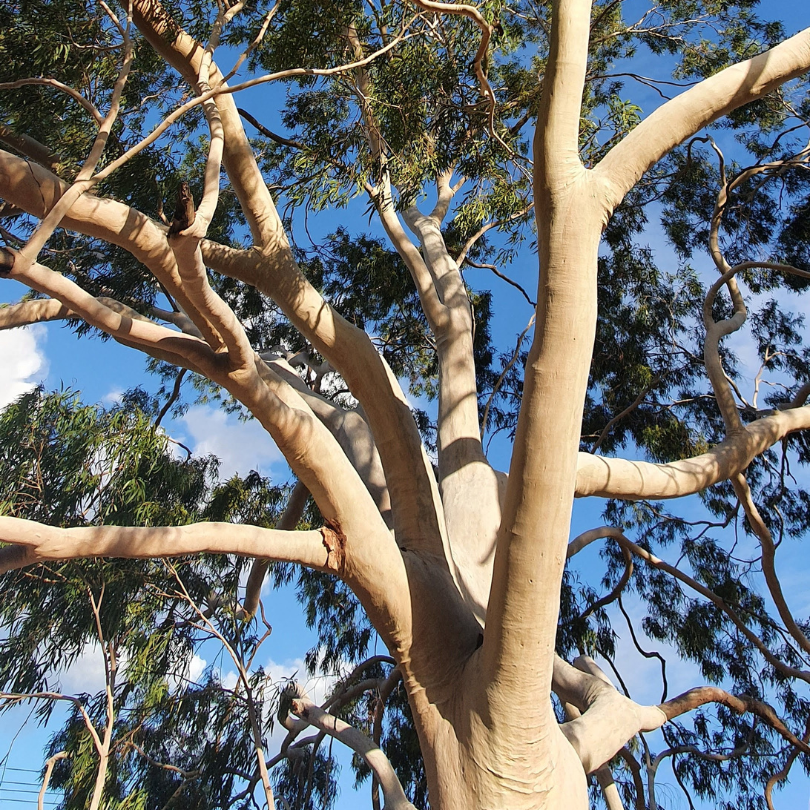
Corymbia citriodora – Lemon-scented Gum
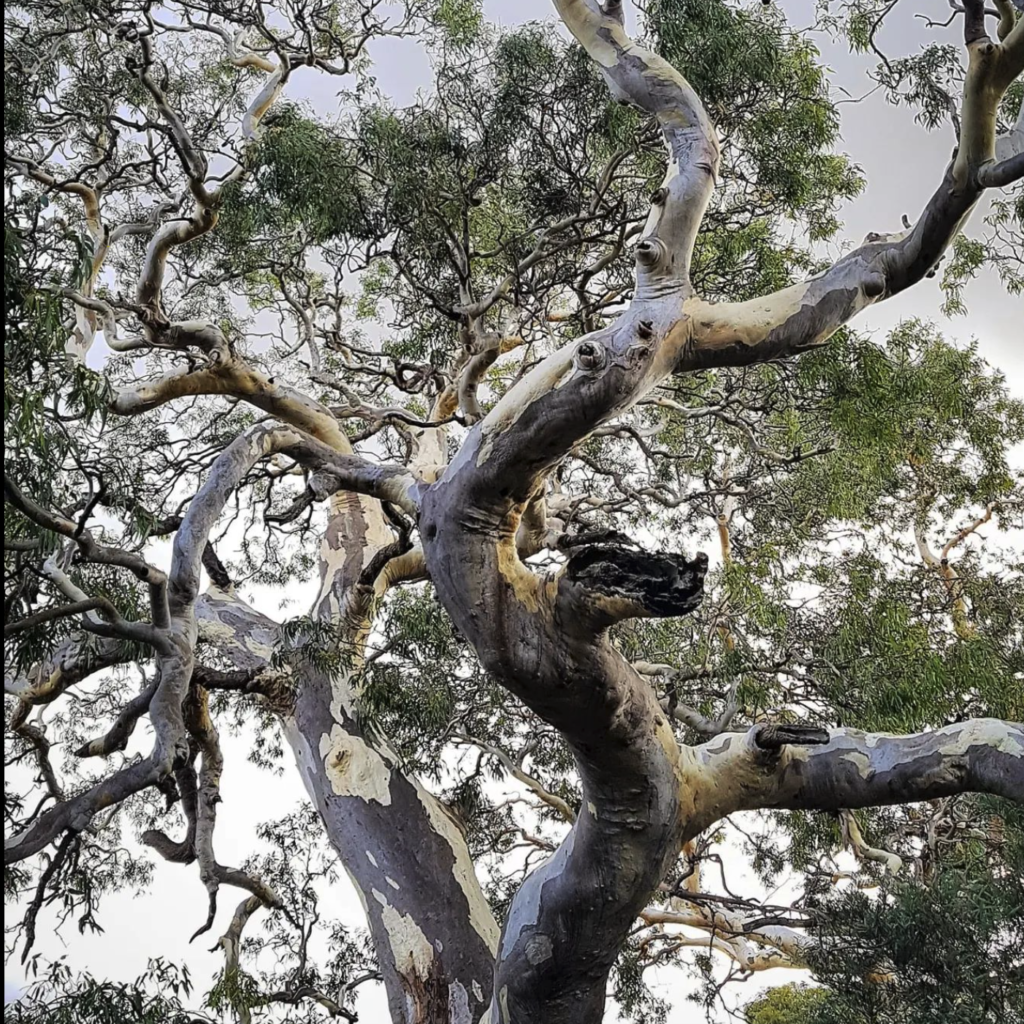
Eucalyptus camaldulensis – River Red Gum
How to distinguish an Angophora from a Corymbia or a Eucalyptus
Although all eucalypts are broadly similar, there are some key characteristics we can use to distinguish one from another.
The most obvious and consistent difference between the Angophoras and other eucalypts is that Angophora buds lack a protective bud cap or ‘operculum’, a defining characteristic of Eucalyptus and Corymbia. That is to say, Angophora gumnut babies wear no hats! In Corymbia and Eucalyptus, the petals and sepals of the ‘flower’ are fused into a woody, protective cap that falls off before the flower ‘opens’. Angophora flowers actually have soft green petals, and although their sepals are hard and woody, they do not form a cap over the developing flower.
Another clue can be found in the leaves. Angophora branches always hold their adult leaves in opposite pairs, while in Corymbia (and most Eucalyptus) the adult leaves are arranged alternately along the stem. A number of Eucalyptus species buck this trend by retaining opposite juvenile foliage in their mature crown (e.g. Mottlecah E. macrocarpa and Tasmanian Spinning Gum E. perriniana subsp. perriniana)
Finally, the flowers of Angophora and Corymbia species are arranged at the end of branches in showy ‘corymbs’, an arrangement where flowers in a cluster grow on stalks of different lengths so they are all arranged on the same plane. The arrangement of flowers in Eucalyptus species range from clusters at the end of branches to inflorescences at the base of leaves and along branches.
Keep an eye out for these features next time you see a ‘gumtree’! You can have a go at identifying eucalypts with the help of CSIRO’s fantastic Eucalypts of Australia resource.
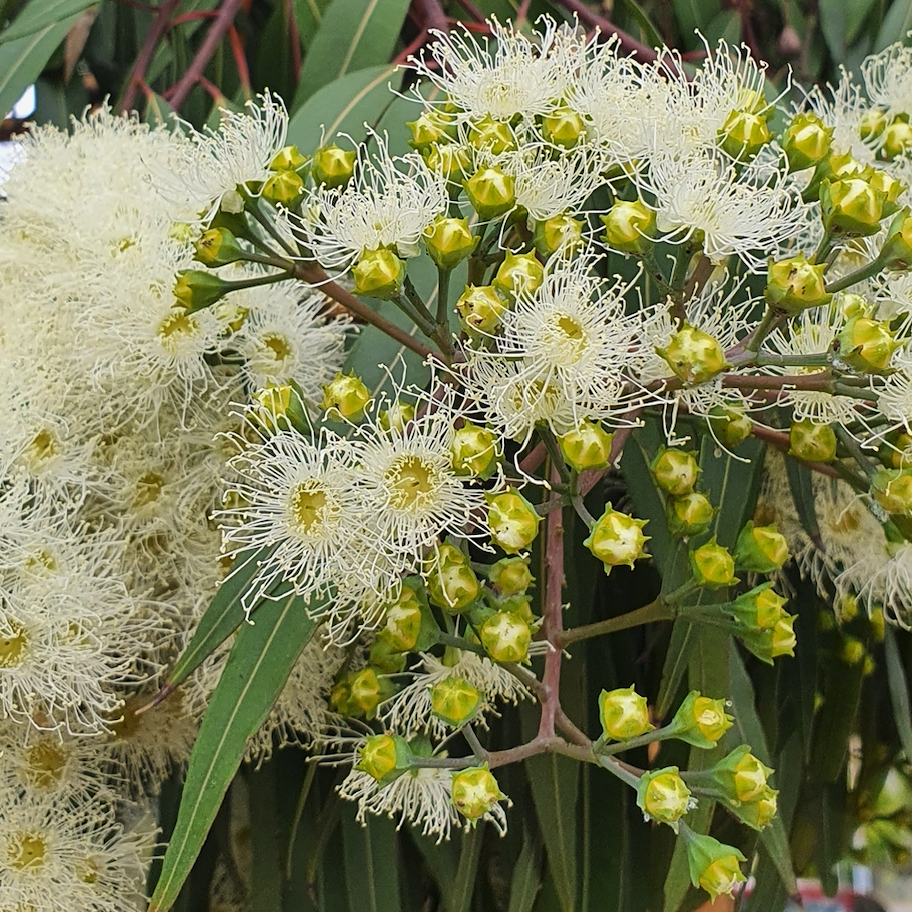
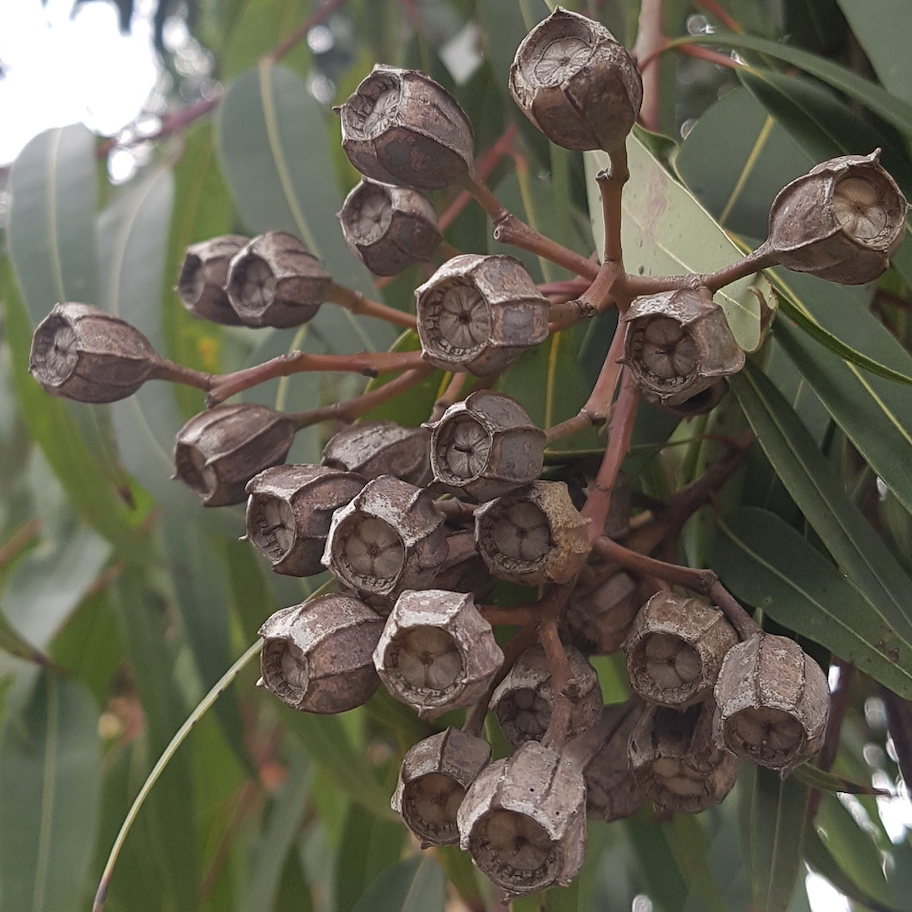
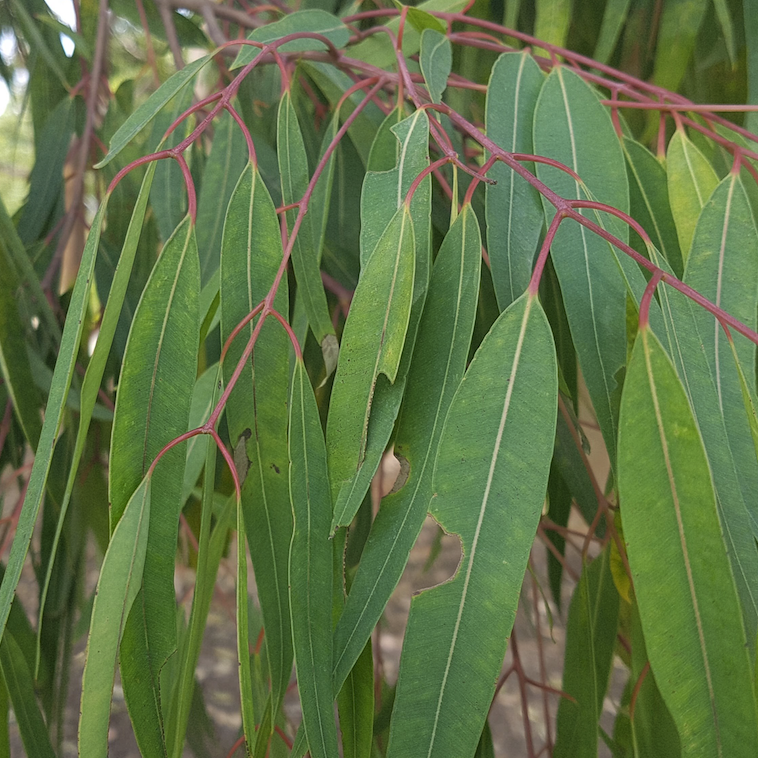
That’s a wrap for this year’s Eucalypt of the Year awards! You can find a list of the 2023 contenders here. Follow Eucalypt Australia on Facebook, Twitter and Instagram to discover more about our iconic eucalypts and tune in next March for Eucalypt of the Year 2024!

Banner image courtesy of Cathy Cavallo.

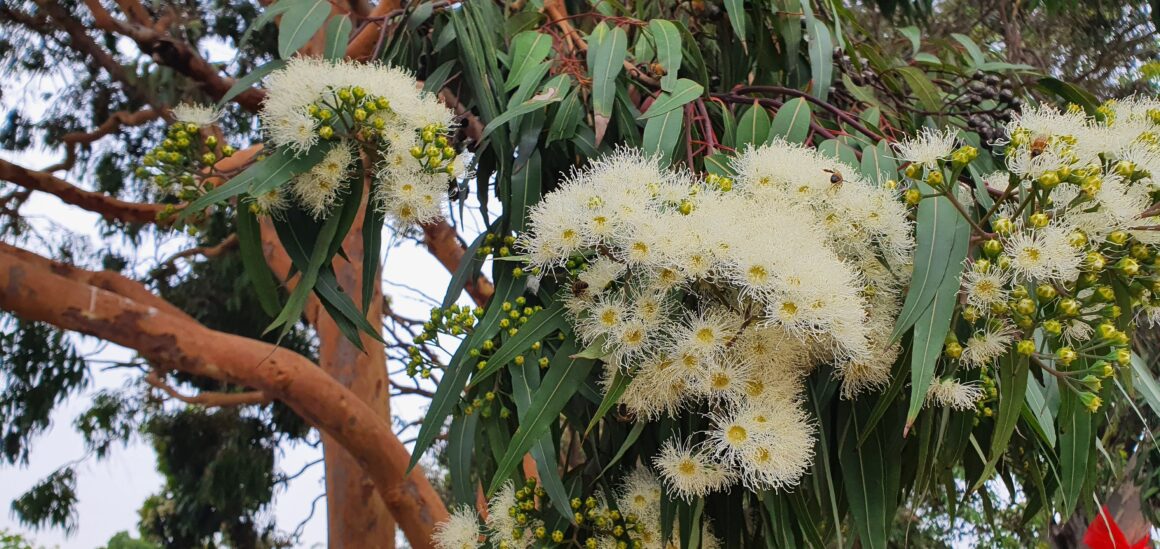
Leave a Reply